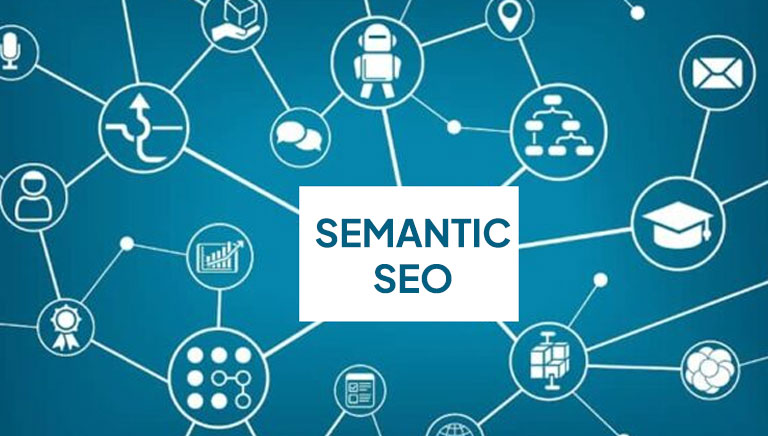Programmatic SEO in 2025: How to Scale Traffic Without Writing Hundreds of Posts

In the world of SEO, there’s a powerful strategy few are talking about — yet it’s silently driving millions of pageviews.
It’s called Programmatic SEO, and in 2025, it’s more effective — and scalable — than ever before.
If you’re tired of writing one blog post at a time, this strategy might just be your golden ticket to massive organic growth.
In this guide, we’ll cover:
- What programmatic SEO is
- How it works in 2025 (post-AI boom)
- Examples of sites using it successfully
- Step-by-step process to build your own pSEO engine
- Tools, templates, and best practices
- Risks, limitations, and how to do it right
- Bonus: How to track success and scale smartly
What is Programmatic SEO?
Programmatic SEO (pSEO) is a technique where hundreds or thousands of landing pages are created using data and templates to target long-tail keywords at scale.
Instead of manually writing unique articles, you build a system that auto-generates optimized content using:
- Keyword patterns
- Structured datasets (e.g. cities, tools, services)
- Templates with dynamic fields
- AI-assisted copy where needed
It’s especially powerful for:
- SaaS companies
- Directories
- Affiliate sites
- Local SEO
- Comparison sites
- Review aggregators
Why Programmatic SEO Works in 2025
- Long-Tail Keywords Still Drive the Majority of Search Traffic
70%+ of all Google searches are long-tail. With pSEO, you can target them at scale. - Google Rewards Topical Depth
Instead of thin, one-off posts, programmatic pages cover specific variations within a topic cluster. - AI Tools Can Now Write Better Supporting Content
In 2025, tools like ChatGPT, Jasper, and ContentForge allow you to create better templated content — faster. - Indexing Has Improved with Better Site Structure
Google has gotten better at crawling large-scale pSEO sites, especially those with clean internal linking and schema. - Micro-Niche Focus Pays Off
Programmatic SEO lets you dominate narrow niches with hundreds of pages answering precise queries.
Real-World Examples of Programmatic SEO
✅ Zapier
They create programmatic pages like:
- “How to connect [App A] to [App B]”
- Generated at scale with unique intro text + structured info
✅ Indeed
Thousands of local job listings generated dynamically based on:
- Location + Job Title combinations
✅ Nomad List
City-specific pages built using a structured database:
- Cost of living, weather, internet speed, etc.
✅ G2 & Capterra
Review platforms with dynamic pages based on:
- “[Software Category] for [Industry]” or “[Alternative to X]”
✅ ClickHype (Future)
You could use pSEO to create:
- “[Keyword] Blog Post Ideas in 2025” for every micro-niche
- “Best AI Tools for [Specific Use Case]” pages
How to Build a Programmatic SEO Engine (Step-by-Step)
Step 1: Identify Your Keyword Patterns
Look for repeatable formats:
- [Best X for Y]
- [How to do X in Y]
- [X vs Y Comparison]
- [X alternatives for Y use case]
Use tools like:
- Ahrefs
- LowFruits
- KeywordChef
- Google Autosuggest
Example:
- Topic: AI Tools
- Patterns: “Best AI tools for [industry]”, “Free AI tools for [purpose]”
- Dataset: 50 industries, 20 purposes = 1,000+ page combos
Step 2: Collect and Structure Your Data
Your content depends on data. Build a spreadsheet with columns like:
- Location
- Product
- Price
- Features
- Benefits
- Pros/Cons
Sources:
- APIs (like Yelp, Booking.com)
- Public datasets
- Your own research or scraped data
Step 3: Build Dynamic Page Templates
Create 1–3 templates for each page type:
- Intro: Insert keyword, brief hook
- Body: Insert data blocks (tables, bullets, etc.)
- Call to action: Insert dynamic CTA based on keyword
Tools to use:
- Webflow (CMS Collections)
- WordPress + ACF + Custom Templates
- Sheet2Site
- Notion2Site
- Softr + Airtable
Step 4: Add Semantic Content (Helpful AI Assist)
Each page should include:
- H2s with semantic phrases
- FAQs generated by AI (based on People Also Ask)
- Intro/outro paragraphs tuned to search intent
- Internal links to other relevant programmatic pages
Tools:
- ChatGPT + Frase
- NeuronWriter
- SurferSEO (NLP Terms)
Step 5: Technical SEO for pSEO
- Use XML sitemaps to help with indexing
- Compress and lazy-load images
- Schema markup for reviews, FAQs, etc.
- Canonical tags to avoid duplication
- Strong internal linking using breadcrumbs and filters
- Dynamic meta titles + descriptions from datasets
Deep Dive: Internal Linking and Schema for pSEO Success
To help Google understand and rank your massive page sets:
- Use breadcrumb schema for hierarchy
- Implement structured data like FAQ, Review, Product, LocalBusiness
- Create hub pages that interlink clusters (e.g., “All AI Tools by Industry”)
- Use related posts, filters, or sidebars to link programmatic pages contextually
- Build XML sitemaps broken by content type (e.g., /tools/, /comparisons/, /locations/)
Avoid These Common pSEO Mistakes
❌ Thin Content – Add semantic depth, not just auto-generated blurbs. Google ignores shallow pages.
❌ Duplicate Pages – Ensure dynamic values make each page unique. Avoid overlapping combinations.
❌ No Topical Authority – Back your programmatic pages with long-form content and pillar guides.
❌ Over-Reliance on AI – Always human-edit where possible to add value, emotion, and tone.
❌ Not Tracking Performance – Always measure what works and prune what doesn’t.
Programmatic SEO Toolkit for 2025
| Tool | Use Case |
|---|---|
| Airtable | Organizing dynamic data |
| Webflow | Auto-generating pages with CMS |
| Frase.io | Content briefs + semantic expansion |
| Sheet2Site | Turn Google Sheets into websites |
| ChatGPT | Generate intros, FAQs, and summaries |
| NeuronWriter | NLP optimization |
| Surfer SEO | Real-time content grading |
| Softr | No-code dynamic site creation |
| Google Looker Studio | Visualize pSEO performance |
How to Track and Optimize Programmatic SEO Performance
Scaling is just one part — optimization is key.
Metrics to Track:
- Indexed Pages vs. Total Generated Pages
- CTR (Title + Meta testing matters)
- Time on Page (Add helpful visuals or tools)
- Pages with zero traffic (Consider de-indexing or merging)
- Keyword Cannibalization (Map clusters carefully)
Use tools like:
- Google Search Console (indexation, queries)
- Google Analytics 4 (engagement metrics)
- Screaming Frog (duplicate tags, thin content)
- Looker Studio dashboards (combine data sources)
Can New Websites Use Programmatic SEO?
Absolutely — in fact, it’s a great equalizer in 2025. Instead of competing on a few core keywords, you can:
- Target long-tail variations at scale
- Gain topical authority in micro-niches
- Get featured snippets by answering narrow queries
With the right structure, even a low-authority site can generate consistent organic traffic with pSEO.
Bonus Tip: Pair pSEO with social proof (like upvotes, comments, reviews) on high-intent pages to boost trust and rankings.
Final Thoughts: Is Programmatic SEO Worth It in 2025?
✅ If you want to:
- Scale traffic efficiently
- Build topical depth
- Rank for hundreds of low-competition keywords
Then yes — pSEO is absolutely worth it.
But it requires smart planning, solid data, clean site architecture, and a balance of automation + human editing.
It’s not a “quick fix.” It’s a powerful system that pays dividends long-term.
Ready to build your own SEO machine?
Explore AI-powered SEO guides, tools, and templates at ClickHype.co.uk — your SEO lab for 2025 and beyond.










